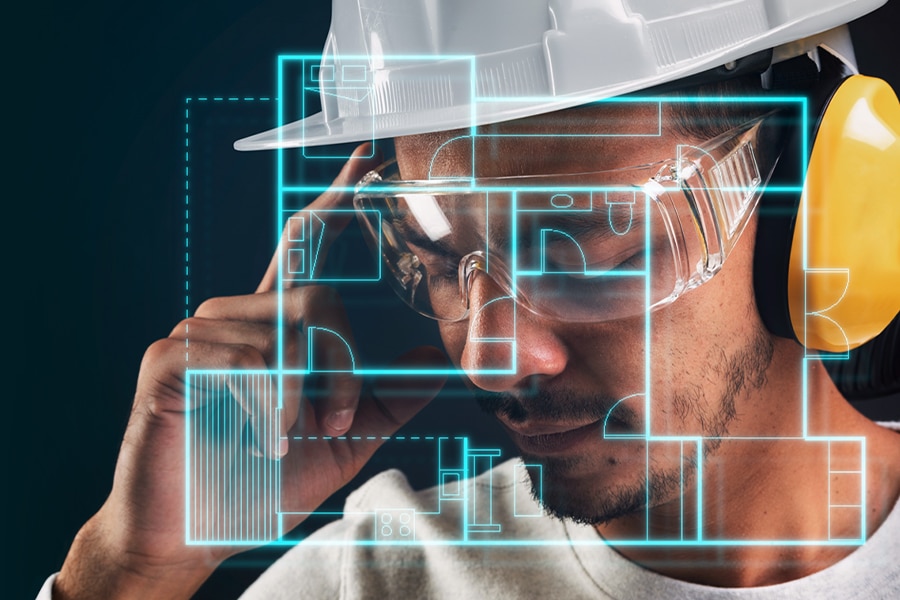Before discussing smart PPE – what it is, why we need it and how it’s used – it’s perhaps worth considering its heritage.
People have been adorning themselves with specialized clothing to protect against physical harm while going about their business, whatever that activity may be, for centuries.
One of the earliest, and perhaps most common, instances of PPE was armor used by soldiers from ancient times until the gunpowder era.
The first PPE “proper” is deemed by some to have been gas masks – also known as respirators – which were issued to frontline troops on both sides during World War I, when chemical gas attacks were common.
In World War II, the fear of gas being used against civilian populations saw gas masks issued to ordinary people, including children.
In workplace situations, PPE is a somewhat more recent convention. Hard hats were introduced into the US mining industry in the 1920s, and construction workers began using similar protective headgear a decade or so later.
Others point to eye protection, which dates to the mid-19th century, while protective gloves, like armor, date back to ancient Greece.
Modern PPE in construction
Fast-forward to the present day, and we take for granted seeing construction site workers decked out in health and safety garb.
Take a look at any modern construction site (see image), and the chances are you will see what is stipulated in terms of required safety clothing and personal protection equipment: hard hats, boots, gloves and often hi-vis jackets.
UK law says in most cases construction workers must wear head protection, but there has been no requirement for such apparel to be smart.
What is smart PPE?
So how did we get from basic to “smart” PPE? And what are the most common types of smart safety equipment?
The development of smart PPE technology was a response by industry leaders and those in vulnerable professions to seek protective garments and headwear that reacted to the conditions and surroundings of the wearer.
The advent of the Internet of Things, or the Industrial Revolution 4.0, has prompted a much greater use of digital technology in the workplace, including building sites. It was only a matter of time before this went beyond designing and planning projects using architectural software and into the realm of worker protection and enhancement.
The arrival of COVID-19 and the need to be extra vigilant when working on a construction site to avoid coming into contact with others only furthered the cause of PPE, which reacts to its surroundings and the proximity of potential hazards.
The “smart” part of smart PPE is usually some form of electronics – cameras or sensors mounted on a hard hat, for example, that can assess the whereabouts of the wearer, see what they are seeing and record their movements.
In the case of an accident, there will be a reliable record of what happened, as viewed by the camera and picked up by the data sent back to the central information point, either to the contractor’s office or a point on the building site itself.
What can smart PPE wearables and sensors do?
Smart PPE – and its upside – extends beyond helmets. Observers note that earmuffs and face masks can improve communication in loud or low-visibility environments.
Smart PPE sensors can connect with cooling and heating elements and adjust according to body and external temperatures, offering critical help when the wearer is in a dangerous situation.
Lockout devices can prevent equipment-related injuries with a laser-enabled stop device, and sensors embedded in clothing can monitor elements such as gas, chemicals, heat, sound and impacts. The sensors can then alert supervisors to these dangers.
Other wearable smart PPE include belts and bracelets, the latter featuring a temperature sensor, pulse sensor and panic button technology in the event the wearer gets into difficulty on-site.
Industry watchers then consider the challenges facing smart PPE. Given the degree of data involved, workers’ privacy could be an issue. If an accident occurs on smart PPE’s watch, what then? And how about persuading workers to wear the technology, knowing that their every move is being monitored?
One would imagine most workers wouldn’t have an issue with adopting and wearing it since they would be at work and not shirking, but it is an issue.
What are the challenges of using smart PPE?
Other challenges in implementing smart PPE outlined in a paper, “The Potential of Implementing Smart Personal Protective Equipment (PPE) To Minimize Work Related Injuries in Construction Sites,” include the high cost of purchasing such technology, complexities around installation and monitoring, and maintenance costs.
“Similar to other high technology products, the unfamiliarity of product usage and the cumbersome of wearing and operating the smart PPE create resistance to its adoption,” adds the paper.
Yet the potential around smart PPE is clear, and adoption of this technology is growing. Fortune Business Insights forecasts that the global smart PPE technology market is projected to grow from US$3.13 billion in 2021 to US$9.05 billion in 2028, at a compound average growth rate of 16.4% over that seven-year period.
Fortune goes on: “With smart technology, the role of PPE has changed … it offers environment monitoring capability, users’ health status, real-time communication, smart safety solutions and other benefits.”
And as well as protecting individual workers, smart PPE can also enhance productivity, the publication argues, which will be music to the ears of construction clients who want to see their projects delivered efficiently, with minimal to zero waste, reduced costs and shorter delivery schedules.











